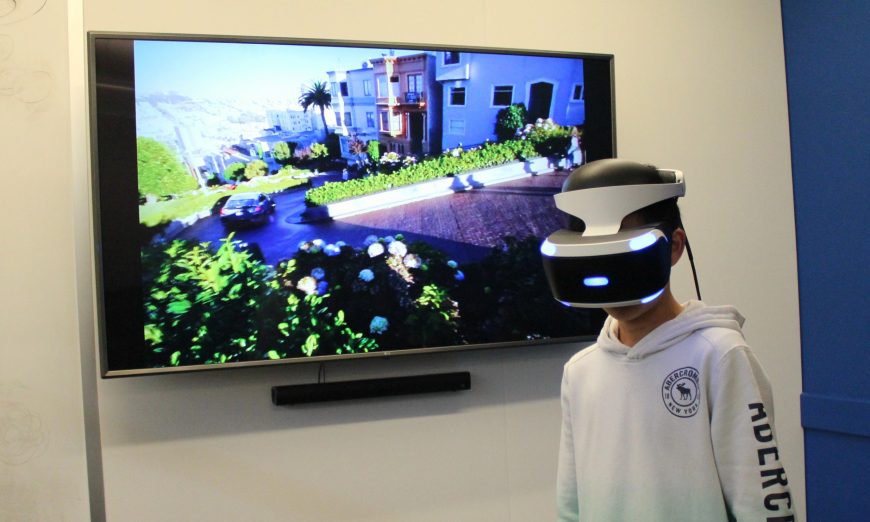Outside Northside Library on Feb. 23, children worked on a number of projects that were part of Bay Area Discovery Museum’s Try It Truck, such as tinkering around with parts from old electronics. Inside the library, a number of events caught the attention of library goers, including a Math Bee and a series of Family STEM (Science, Technology, Engineering and Math) challenges.
“Science Day is celebrated in India every year,” said Cheryl Lee, Northside Library’s Branch Manager. “We’ve had 1,500 to 2,000 people come each year. This is our fifth year running this program.”
People ages 10 and up had access to a virtual reality experience. According to Helen Lutke, Library Assistant 1 in Technology, participants used the PS4VR System, which is a virtual reality device that allows for the viewing of images and videos taken on Insta360 cameras. While wearing the device, participants immersed themselves in places — such as Lombard Street in San Francisco — by looking all around them.
“This program was based on a grant that allowed us to buy Insta360 cameras,” said Stephanie Barraza, Central Park Library’s Library Consultant, of the images and videos viewers had access to. “We invited library patrons to go out to take pictures and videos around the state. The Insta360 cameras are available for check out at Central Park Library.”
“They’re cameras that can take pictures of every angle — what’s above you, below you, and all around you,” said Rachel Hughes, Northside Library’s Teen Librarian, of the Insta360 cameras.
Another popular feature of Science Day was two slime making sessions that Hughes oversaw.
“I read an article about thermochromic pigment. It’s the thing that makes color change when you’re at higher or lower temperatures,” Hughes said. “I thought, why not add that to slime.”
When the slime with the thermochromic pigment, is heated to 82 degrees Farenheit, the slime will change color.
At the workshop, each child combined thermochromic pigment and baking soda in their own bowl. Next, Hughes added white glue and then saline solution to these ingredients. After mixing everything together, the children marveled at the way their chunks of slime stretched out. When they held the slime in their warm hands, the slime could change from a light blue to a misty green.
“In the white glue are a bunch of polymers,” Hughes explained. “By adding baking soda or a basic material, such as Borax, to the glue, it lengthens the polymers so it makes the slime stretchy. When you add saline solution or water, the strings slide against each other and also make it stretchy, but not sticky.”






